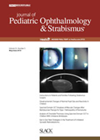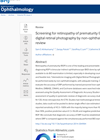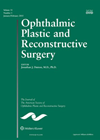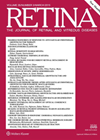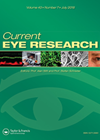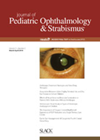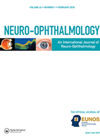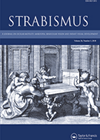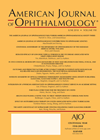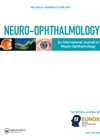You searched for "career"
The clinical spectrum of albinism
The authors sought to examine clinical correlates that may be related to foveal development in albinism with an aim to qualitatively describe the phenotype spectrum of albinism. Binocular best corrected visual acuity ranged from 20/20 to 20/80. Best corrected visual...Screening for ROP using wide-angle digital retinal photography by non-ophthalmologists
This is a systematic review article to evaluate the accuracy of digital retinal photography (DRP) performed by trained personnel (non-ophthalmologists) in diagnosing clinically significant retinopathy of prematurity (ROP). The authors used search engines including Medline, EMBASE, CINAHL and Cochrane databases....Wide variation in the volume of the sphenoid trigone
This is a radiological study of the volume of the sphenoid trigone in normal subjects. The authors were interested to see how much volume could be gained by removal of the trigone during an orbital decompression for thyroid eye disease....Eye drop prescription and usage in glaucoma patients
1 April 2015
| Lorraine North
|
EYE - Glaucoma
The authors describe a study using a questionnaire to determine how patients use their glaucoma medications to investigate the association between patterns of eye drop prescriptions and medication use. They enrolled 67 Japanese patients who had been prescribed topical anti-glaucoma...
VEGF and axial length (RVU)
1 April 2015
| Saruban Pasu
|
EYE - Vitreo-Retinal
The authors of this paper set out to examine whether the concentrations of VEGF in the vitreous were associated with refractive error and axial length in eyes without retinal disease, except of macular holes or epiretinal membranes. A vitreous sample...
Precision and accuracy of TearLab osmometer
1 February 2015
| Khadijah Basheer
|
EYE - Cornea, EYE - General
|
Dry-eye disease, in situ osmometer, tear osmolarity
Measuring tear osmolarity has been identified as a potential method for objectively diagnosing dry eye. TearLab osmolarity system is an in situ osmometer which may be a promising candidate for clinical use as it is portable and only requires a...
Results of single muscle advancement surgery
The aim of this study was to determine quantitatively the efficacy of medial and lateral rectus muscle advancement in consecutive exotropia and esotropia. The authors analysed the relationship between the change in muscle position and the change in visual angle...Early intraocular complications of aneurysmal subarachnoid haemorrhage
1 December 2014
| Claire Howard
|
EYE - Neuro-ophthalmology
The aim of this study was to estimate the incidence of a whole spectrum of early intraocular complications in patients suffering from aneurysmal subarachnoid haemorrhage (SAH) and to identify factors that are potentially associated with these fundus findings. In total...
Childhood visual development in albinism and infantile nystagmus
The authors compare monocular and binocular development measures in 16 children with albinism, 10 with infantile nystagmus (INS) and 72 with normal vision to address interocular acuity differences, crowding ratios and binocular summation rates. The children were aged between four...Is laser refractive surgery safe for patients taking isotretinoin?
This multicentre, retrospective, interventional case series assesses the outcomes of laser in situ keratomileusis (LASIK) and photorefractive keratectomy (PRK) in 113 patients taking isotretinoin between January 2003 and September 2017. Isotretinoin is contraindicated for LASIK and PRK and patients are...Use of the RAPDx device to evaluate efficacy of treatment in patients with optic nerve disease
1 October 2018
| Claire Howard
|
EYE - Neuro-ophthalmology
|
Detection rate, optic nerve disease, relative afferent pupillary defect, standard values
The RAPDx objectively determines the RAPD magnitude by alternately presenting light stimuli to each eye and deriving amplitude and latency scores. The authors of this paper evaluated the amplitude and latency scores from the RAPDx together with other ophthalmic investigations...
Rituximab as an immunosuppression treatment for thyroid eye disease
1 October 2015
| Claire Howard
|
EYE - Neuro-ophthalmology
Thyroid eye disease is traditionally treated with high dose glucocorticosteroids and surgical orbital decompression, where responses are often inadequate. This medical treatment is centred around symptom control and reduction of thyroid hormone synthesis, not immunosuppression. Rituximab is an anti-CD20 monoclonal...

